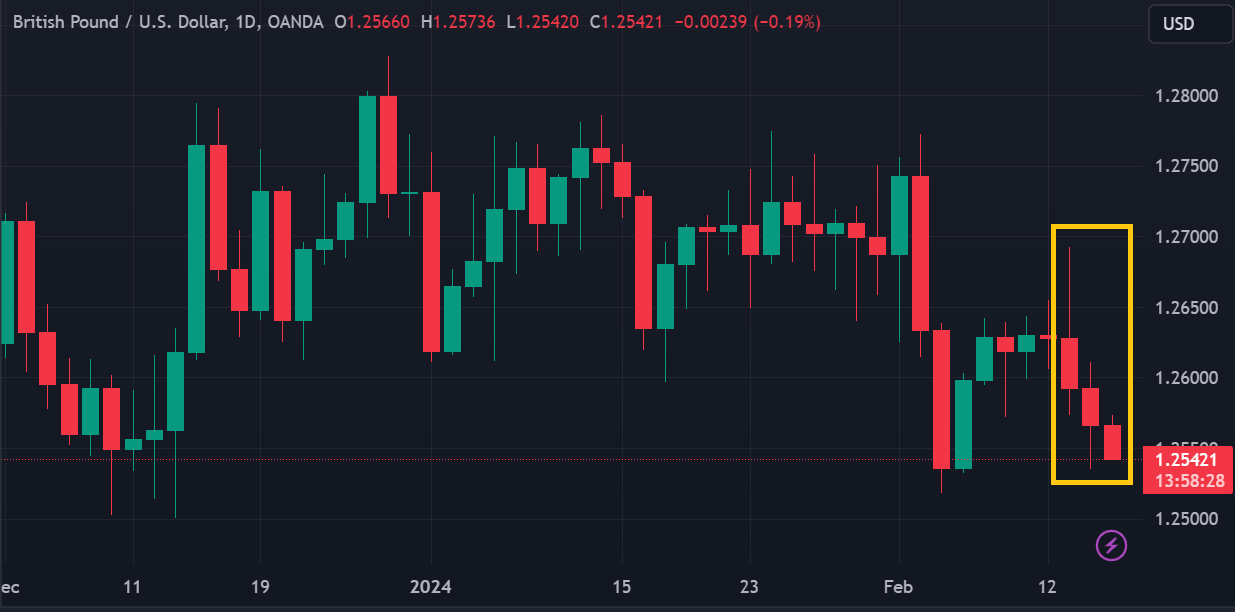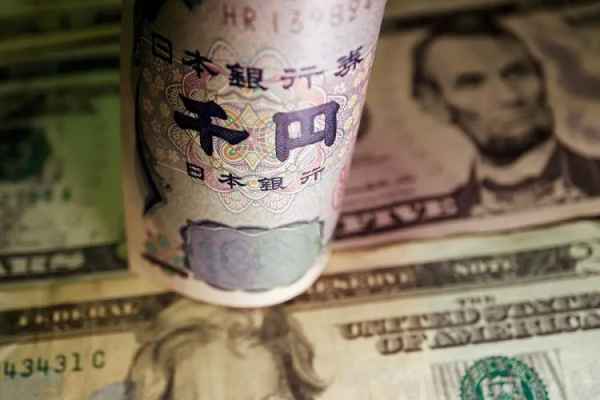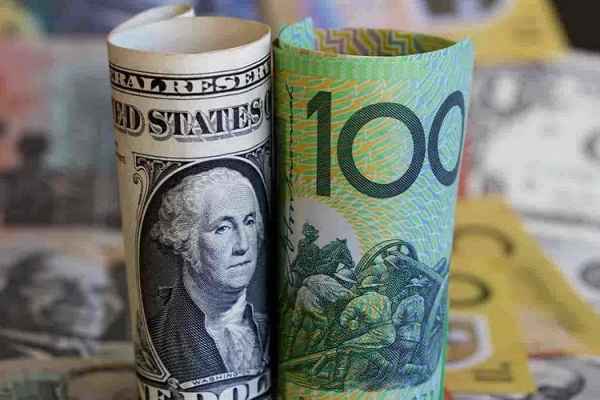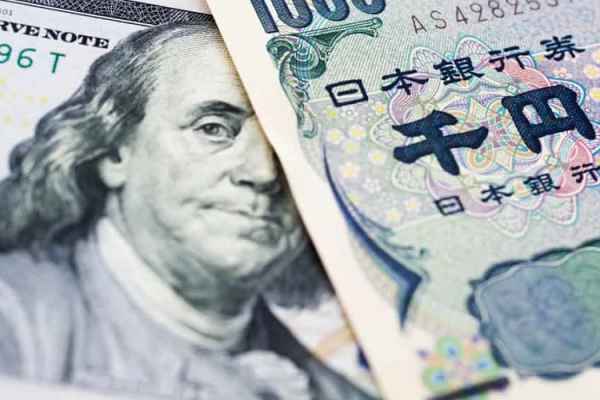The UK GDP data declined twice quarterly, causing the pound sterling to collapse. However, some analysts saw it as a buying opportunity.
UK Gross Domestic Product (GDP) data confirmed that King Charles II's country had gone into recession at the end of last year. As a result, the pound sterling exchange rate collapsed against all other majors in European session trading on Thursday (15/February).
GBP/USD weakened further to the 1.2540s. GBP/JPY plunged more than 0.4%. Meanwhile, EUR/GBP reached its highest level in a week.

Markets are watching three high-impact data releases from the UK this week. Tuesday's employment data was good, showing higher-than-expected wage growth. However, Wednesday's CPI inflation and today's GDP data were disappointing.
The UK Office for National Statistics reported GDP growth was -0.3% (quarter-on-quarter) in Q4/2023. The figure was worse than the market forecast pegged at -0.1%- and the second consecutive quarterly decline in GDP was a sign of a technical recession.
Annual GDP growth collapsed from +0.2% to -0.2% in the same reporting period. The market was still expecting a slight growth of +0.1%.
The figures convinced markets that the Bank of England (BoE) would likely start cutting interest rates in June, so the pound sterling exchange rate immediately weakened. Money market data showed an increase in the chances of such a scenario from about 50% to more than 75%.
For two reasons, some analysts consider this situation a "buy on dips" opportunity. First, the UK economy will likely recover in the first quarter of 2024. Second, the BoE will likely cut rates less frequently than other central banks.
"Weak UK GDP data suggests some potential for profit-taking in long GBP positions. That said, we would favour buying GBP on dips vs. the EUR and look for a move in EUR/GBP to 0.84 in the latter part of this year," says Jane Foley, Senior FX Strategist at Rabobank.
"GBP/USD is trading back in the mid-$1.25 region and is grappling with its 200-day moving average. Should this key support give way, we're eying the 100-day moving average, located at $1.25, as the next downside target in the short-term," says George Vessey, Lead FX Strategist at Convera.
"Despite the very short-term outlook for sterling potentially looking weaker, we still think 2024 should see sterling stage a shallow recovery against the US dollar and euro, mainly due to the higher UK interest rate outlook with less rate cuts expected by the BoE compared to the Fed and ECB," adds Vessey.

 Dedicated FREE FOREX VPS
Dedicated FREE FOREX VPS Free FOREX Virtual Private Server
Free FOREX Virtual Private Server MT4 Demo Contest, Get $500
MT4 Demo Contest, Get $500 Sign Up for an Account, Claim 60% Deposit Bonus
Sign Up for an Account, Claim 60% Deposit Bonus Free MT4/MT5 VPS 2024
Free MT4/MT5 VPS 2024 Send E-mail and Get Free Merchandise
Send E-mail and Get Free Merchandise $1K Refer a Friend Bonus for Pepperstone Pro clients
$1K Refer a Friend Bonus for Pepperstone Pro clients Maximize Your Earnings with 100% Deposit bonus
Maximize Your Earnings with 100% Deposit bonus Trade to Win, $5,000 Monthly Demo Contest
Trade to Win, $5,000 Monthly Demo Contest Claim 30% + 15% Deposit Bonus from LiteFinance
Claim 30% + 15% Deposit Bonus from LiteFinance






